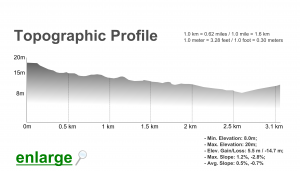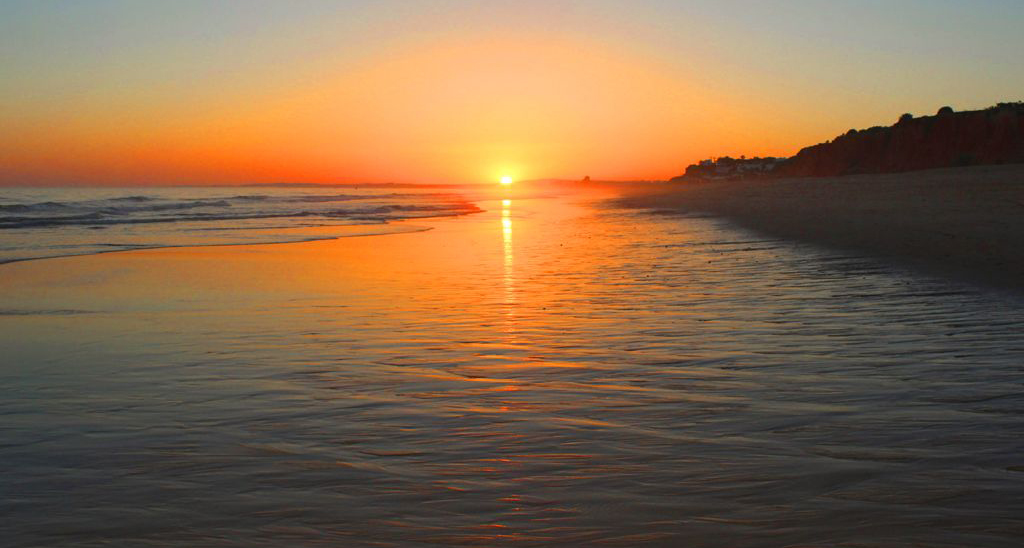
TRAIL FACTSHEET
QUINTA DO LAGO | BIRDS & NATURE: PLEASE SEE HERE
Location: Quinta do Lago, Almancil; Loulé municipality; GPS Coordinates (decimal degrees): 37.035242 N, -8.027176 W; Grade: easy; Type: out & back signposted trails; Lenght: 6300 meters/ 3.9 miles (out & back); Average Completion Time: up to 2.5 hours; Best Time to Visit: all year round; Activities: nature walks; cycling; birdwatching;
Along the trail, you will notice the vast sand dunes facing the ocean. These dunes provide valuable habitat to many psammophyte (‘sand loving’) plants, some of them endemic to southern Portugal. Notable among these plants are the Portuguese Thyme, a fragrant and very endangered species (discover more here), and the rare and beautiful Spiny Thrift (Armeria pungens).
From Quinta do Lago, the only way to reach Gigi Beach and the dunes on the other side of the main water channel is to cross the wooden bridge further down the trail. Besides providing enjoyable panoramas, this bridge – which is the longest wooden bridge in Europe – provides a good opportunity to contemplate the water channels and the dune’s rich plant cover.
Here, low tide brings with it the shellfish catchers that painstakingly collect Grooved Carpet Shell, a gastronomic delicacy that has been harvested throughout Ria Formosa since time immemorial. Following the main trail to the east, you´ll enter a pinewood where it is possible to observe striking birds like the Iberian Azure-winged Magpie (Cyanopica cooki), and the bright yellow Black-headed Weaver (Ploceus melanocephalus), a species accidentally introduced from the African savannas. Under the Umbrella Pines (Pinus pinea), maybe you can even detect the protected Chameleons (Chamaeleo chamaeleon) that inhabit these woods.
 Shortly after, you’ll reach a small lake covered by reeds, where – depending on the time of the year – it is possible to observe a broad array of aquatic birds that include beautiful species such as the Purple Swamphen, the Glossy Ibis and the Little Bittern (please check the list here).
Shortly after, you’ll reach a small lake covered by reeds, where – depending on the time of the year – it is possible to observe a broad array of aquatic birds that include beautiful species such as the Purple Swamphen, the Glossy Ibis and the Little Bittern (please check the list here).
A large bird hide will provide unobstructed panoramas of the lake, a place which is also inhabited by terrapins native to Portugal. Surrounding the lake, in the distance you’ll also see the famous “luxury Algarve villas” of the exquisitely landscaped Quinta do Lago, one of the top luxury destinations in Europe.
Further afield, next to a large carob tree, there is a small tank complex built by the Romans around the 2nd century AD. These tanks were used to produce a special condiment (called ‘garum‘), very popular at the time, which was prepared from the fermented intestines of fish.
After wondering if there was a strong correlation between the ultimate demise of the Roman Empire and the culinary taste of its citizens, you can either make the pleasant way back, or converge with the Ludo Trail to see flamingos strolling quietly in the saltpans.
 You then may want to enjoy the really outstanding beaches located nearby. Stretching west from Quinta do Lago, there is a very long expanse of pristine dunes, soft sand and clear waters. Besides Quinta do Lago Beach, you’ll find the Ancão, Garrão and Dunas Douradas beaches (the latter literally meaning “Golden Dunes”), that have all been awarded the Blue Flag for their high standards. In Dunas Douradas (pictured on the right) and Garrão (near Vale do Lobo), there are two small freshwater lagoons – see Birding Hotspots – where it is possible to find birds like the Little Bittern and the Eurasian Wryneck (Jynx torquilla). If you are arriving from Quinta do Lago and you do not want to walk all 4.0 miles – out and back – it takes to get there, your best option is to use bicycles. However, it is also possible to reach them by car from Almancil. Both free and paid car parks are available. There are also some restaurants along the seashore, starting with Gigi’s at Quinta do Lago Beach. Despite being pricey, those are good seafood eateries.
You then may want to enjoy the really outstanding beaches located nearby. Stretching west from Quinta do Lago, there is a very long expanse of pristine dunes, soft sand and clear waters. Besides Quinta do Lago Beach, you’ll find the Ancão, Garrão and Dunas Douradas beaches (the latter literally meaning “Golden Dunes”), that have all been awarded the Blue Flag for their high standards. In Dunas Douradas (pictured on the right) and Garrão (near Vale do Lobo), there are two small freshwater lagoons – see Birding Hotspots – where it is possible to find birds like the Little Bittern and the Eurasian Wryneck (Jynx torquilla). If you are arriving from Quinta do Lago and you do not want to walk all 4.0 miles – out and back – it takes to get there, your best option is to use bicycles. However, it is also possible to reach them by car from Almancil. Both free and paid car parks are available. There are also some restaurants along the seashore, starting with Gigi’s at Quinta do Lago Beach. Despite being pricey, those are good seafood eateries.
